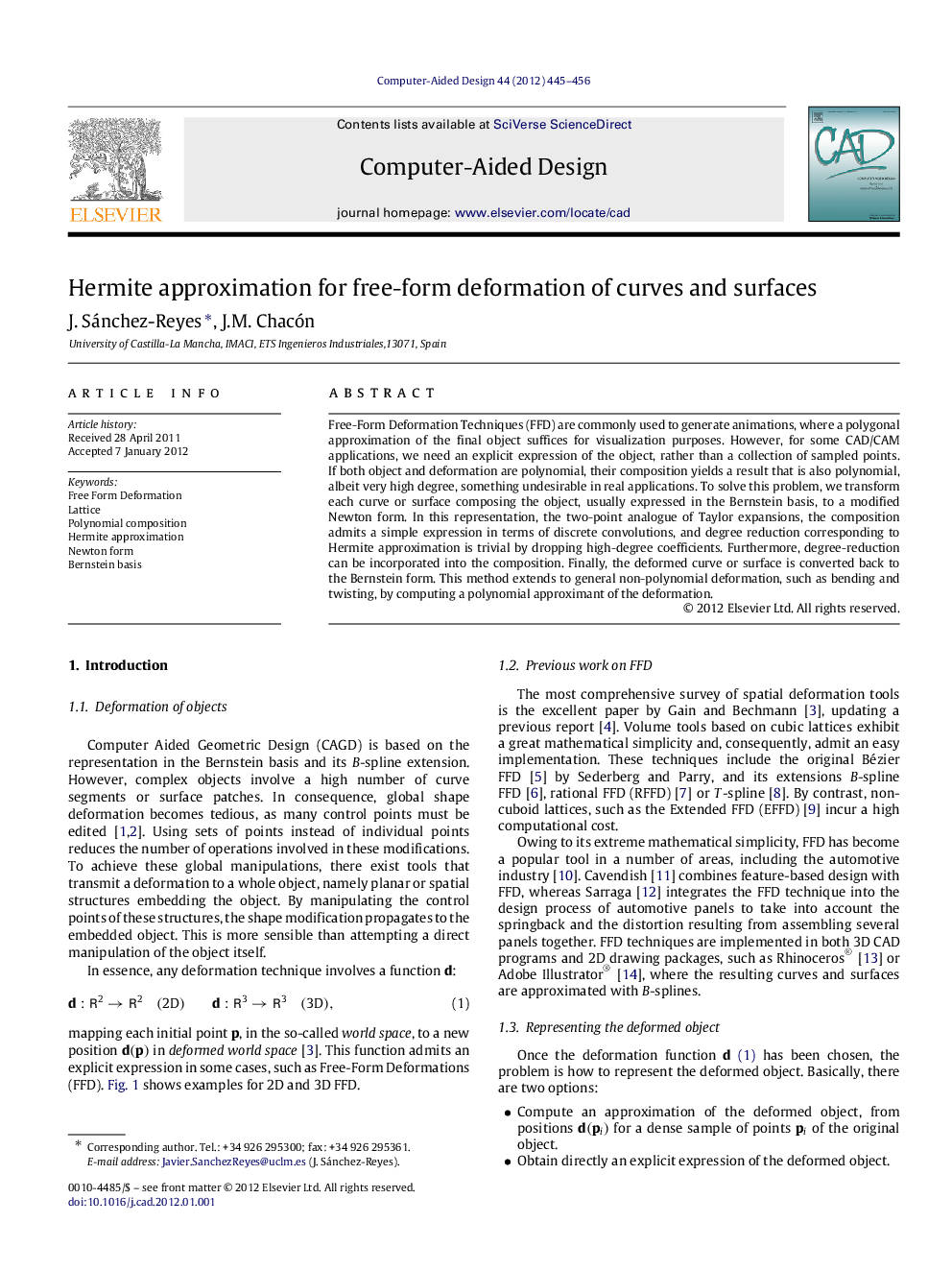| کد مقاله | کد نشریه | سال انتشار | مقاله انگلیسی | نسخه تمام متن |
|---|---|---|---|---|
| 440129 | 690975 | 2012 | 12 صفحه PDF | دانلود رایگان |

Free-Form Deformation Techniques (FFD) are commonly used to generate animations, where a polygonal approximation of the final object suffices for visualization purposes. However, for some CAD/CAM applications, we need an explicit expression of the object, rather than a collection of sampled points. If both object and deformation are polynomial, their composition yields a result that is also polynomial, albeit very high degree, something undesirable in real applications. To solve this problem, we transform each curve or surface composing the object, usually expressed in the Bernstein basis, to a modified Newton form. In this representation, the two-point analogue of Taylor expansions, the composition admits a simple expression in terms of discrete convolutions, and degree reduction corresponding to Hermite approximation is trivial by dropping high-degree coefficients. Furthermore, degree-reduction can be incorporated into the composition. Finally, the deformed curve or surface is converted back to the Bernstein form. This method extends to general non-polynomial deformation, such as bending and twisting, by computing a polynomial approximant of the deformation.
► The exact result from a free-form deformation is a higher degree curve or surface.
► We tackle this problem by using a modified Newton form, a two-point expansion.
► In this Newton form, composition involves only simple discrete convolutions.
► Degree reduction reduces to truncation and yields the two-point Hermite interpolant.
► Degree reduction is incorporated into the composition for greater efficiency.
Journal: Computer-Aided Design - Volume 44, Issue 5, May 2012, Pages 445–456